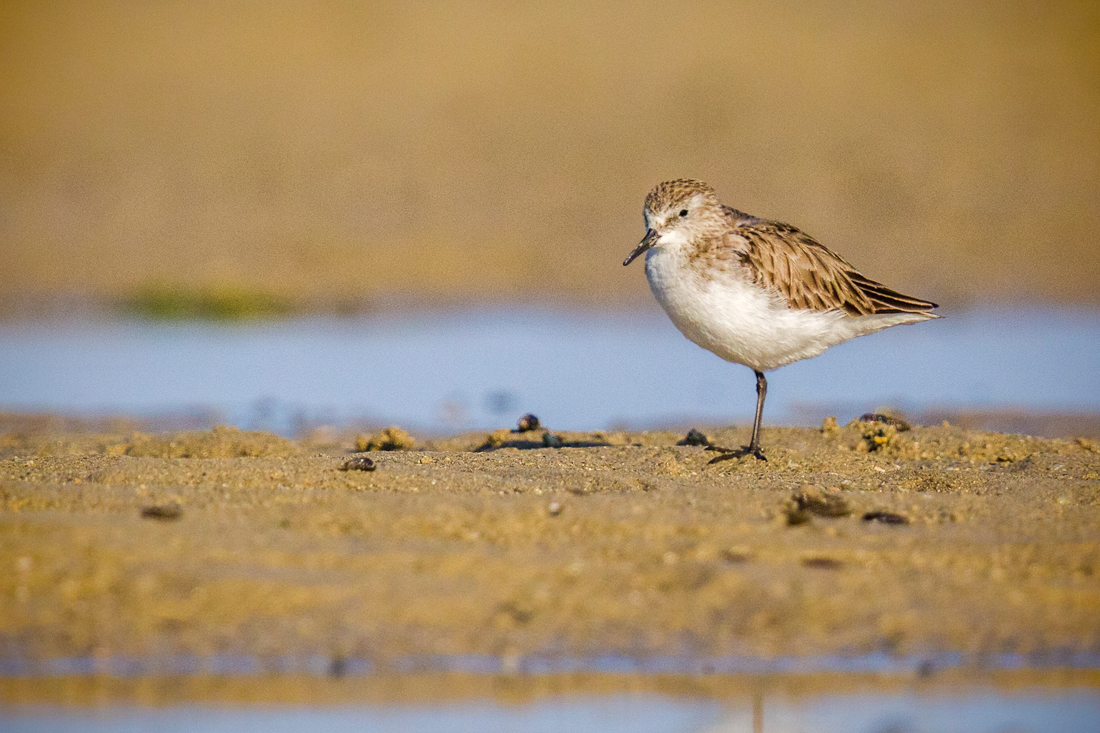| Kingdom: Animalia Phylum: Chordata Class: Aves (Birds) Order: Charadriiformes Family: Scolopacidae |
This shorebird feeds on a variety of invertebrates, including bivalves, amphipods, annelids, and insect larvae. Description: Length: 20-23 cm. All plumages: Bill slightly down-curved; legs and feet black. Adults in summer: Back and crown predominantly rich red-brown, marked with black streaks; breast, neck and face gray, streaked with white; throat white; large black patch on abdomen. Adults in autumn: Soft uniform gray above, suffusing across breast; remainder white; light eyebrow line; occasionally fall adults retain a few of the red feathers of summer on their backs and some individuals show traces of the black abdominal patch. Remarks: This stocky, short-legged bird shows a strong preference for sandy beaches with their adjacent mudflats, where it feeds during receding tides. It is generally seen in small flocks. When the Dunlin is seen in autumn, its long, slightly down-curved bill is its best field mark; in breeding plumage, the black abdominal patch and the reddish brown upperparts are unmistakable. |

